The front compartment of the right-hand sponson on the Tiger was the radio operator's space. Every surface in it bore equipment. Here, we examine its front and side walls.
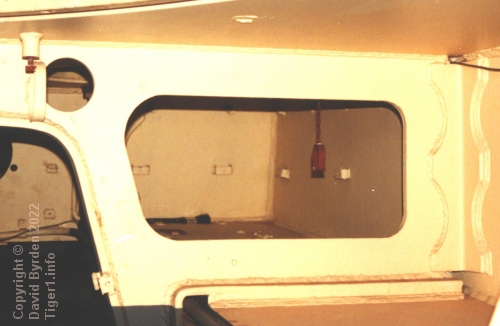
This is Bovington's Tiger "131" during restoration. Looking forwards from the middle hull, we can see the radio operator's sponson compartment through a hole in the roof support brace.

Its front and side walls have two rows of welded mounts on them. Metal panels attach here with screws. They have rails along their tops where MG ammunition bags can be hung [2] . Thus, they both store the ammunition and protect it from metal fragments ("splash"). The same ammunition bags in the turret have no such protection, a consequence of the Tiger's turret and hull originating from two different design teams.
In standard Tigers
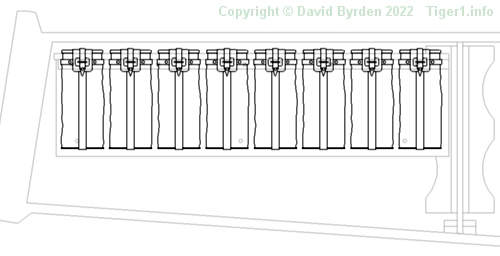
This diagram represents an ordinary Tiger. We are in the radio operator's position, looking into the sponson. The side wall has a single panel running its full length. Eight MG ammunition bags can be hung on it, as drawn here.
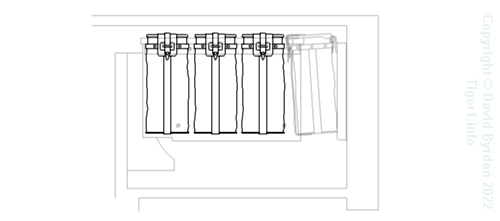
The front wall of this compartment was narrow. Only three bags could fit on it, because the end bag on the side wall took up some space.
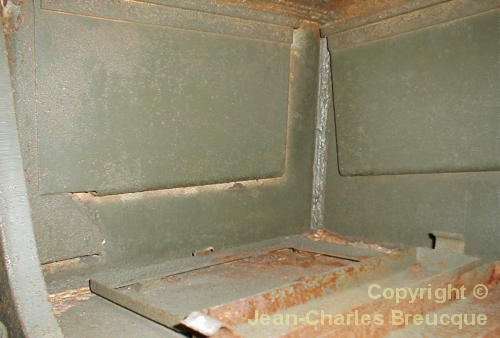
This Tiger is from near the end of the production run. We are looking into the front corner of the sponson compartment [3] . The anti-splash panels are exactly the same as those in the earliest surviving Tiger [1] .
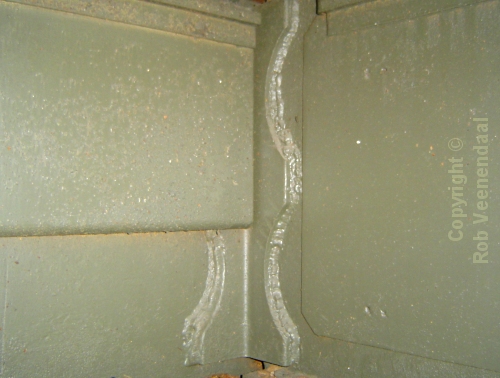
Looking into the rear corner of this compartment in the same Tiger (whose green paint is not authentic) we can see that the anti-splash panel on the side wall overlaps the thick structural angle bracket. Indeed, the panel has a notch for that reason.
In Command Tigers
In Command Tigers, the front wall of this compartment was identical to that in ordinary Tigers. It bore the same panel with a rail that could hold the same three ammunition bags [6] [4] .
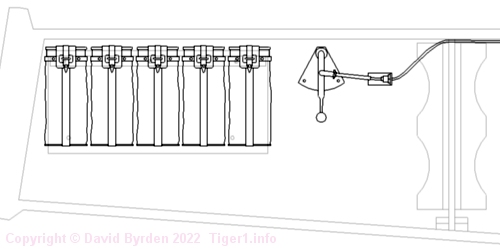
The side wall, however, differed. Its anti-splash panel was only long enough for five ammunition bags, as drawn here. In the remaining space, a device was attached to the wall.
This device was a rotating handle that set the optimal range of the Fu 8 radio. Most Command Tigers carried that radio, but even those with the Fu 7 had this handle premanently installed. The antenna had three distinct range settings, so the handle had three stops. It was linked to the antenna's tuning coil via a Cardan cable that ran along the top inside corner of the side wall [4] [5] .
[1] Survey of Tiger 250031, by Stephan Vogt
[2] Survey of Tiger 250122, at Bovington museum, by David Byrden
[3] Survey of vehicle 251114, at Saumur, by Jean-Charles Breucque
[4] Workshop drawing J 3039 : Befehlstiger hull interior
[5] Workshop drawing J 3156 : Labelling the radio equipment in the Command Vehicle